
Augmentative Mammaplasty
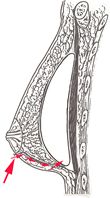 |
Supra-muscumlar augmentative mammaplasty the drawing shows the position |
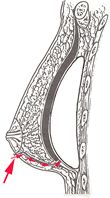 |
Sub-muscular augmentative mammaplasty the drawing shows the position |
This operation is planned and designed to improve the appearance of the breasts through the insertion of silicon gel or saline solution-filled implants, in conformity with the decisions of the Italian Ministry of Health.
Such implants are placed behind the mammary gland and do not interfere with their basic functions (lactation).
There are many different kinds of available implants, varying in size and shape.
The choice of the most appropriate implants depends on the thorax size together with the original volume, shape and profile of the breast itself.

Augmentative mammaplasty in a patient who underwent a heavy weight loss
The surgeon should be informed by the patient of the expected volume change, in order to be able to suggest the most suitable implant size. The first mammary implants were developed in the early Sixties and at first were made of a simple silicone envelope filled with silicone gel. Modern technology has now improved this product, making it safer and more tolerable. The prostheses employed nowadays, the so-called double lumen implants, are wrapped by several silicon capsules and their surface is treated so as to limit body reactions to a minimum.
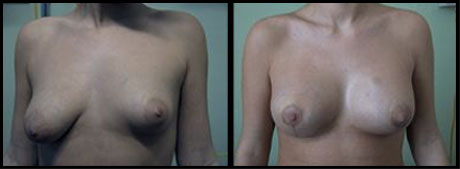 |
| Mammary malformations Breast asymmetry: - pre-operative picture: the right breast was ptotic, while the left one inadequately developed. - post-operative picture: the asymmetry has been corrected and a breast implant has been inserted into the left breast so as to make up for its lack of volume. |
Patients often ask whether this procedure may increase the risk of breast cancer. At the moment there are no reasons to say (or to hypothesize) that the insertion of implants is linked to the development of any neoplastic formation. Furthermore it must be clear that the implant is located behind the mammary tissue, in contact with the thoracic wall; therefore there will be no problem in performing future preventive X-ray examinations, that will be just as effective as in the other patients.
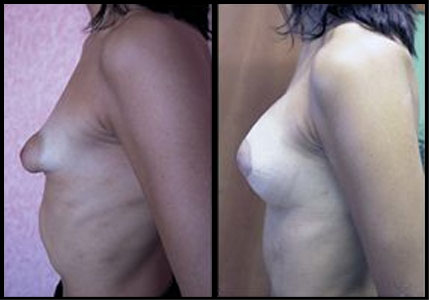 |
| Glandular/areolar malformation Alteration of breast shape and volume as well as of its areola, corrected by means of mammary reduction associated with implant insertion. |
Should you undergo a mammography, in order to facilitate the radiologist's work, it is advisable to inform him/her about the operation performed. The polemics recently arisen on the hypothetical dangerousness of the implants led to the prohibition to employ certain types of prosthesis. We obviously only make use of the models accredited and allowed by the Italian Ministry of Health. I personally discourage the use of saline-filled implants, being more subject to the wear of time, and being likely to shrink (from leaking) in the long run. Furthermore they are aesthetically less pleasant and more rigid to the touch.
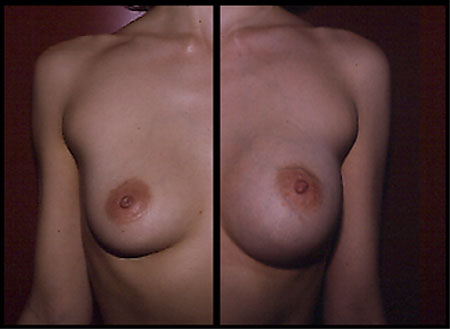 |
|
| Pre-operative picture | Post-operative picture |
 |
| Pre and post-operative pictures with correction of the asymmetry of the mammary sulcus. |
Surgical Procedure
The incisions through which the mammary implants can be inserted can be performed along the submammary sulcus, the areolar margin or at armpit level.
In the three different cases:
- the incision around the areola will tend to blend with the line that naturally marks the passage between the darker areolar skin and the skin enveloping the rest of the breast
- the incision located in the submammary sulcus will end up to be hidden behind the mamma itself
- the armpit incision will be concealed by the arm
All these incisions will be 3-4 cm long and located so as not to show evidence of the operation performed. One assumes that the cosmetic operation is performed not only to improve your body's profile, but also to improve breast shape and projection.
| The scar is barely visible because: | |
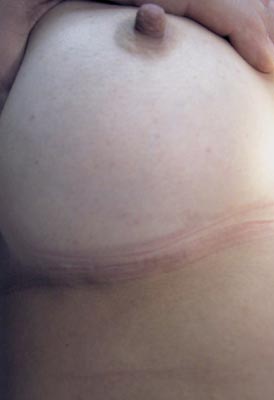 |
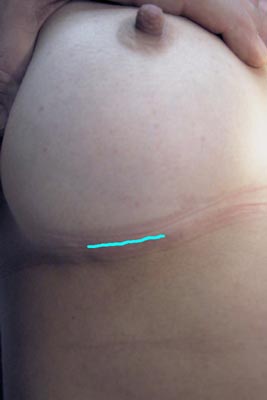 |
| it is hidden by the folds created by the bra |
|
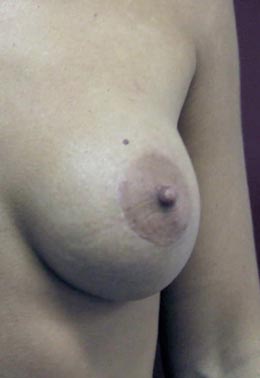 |
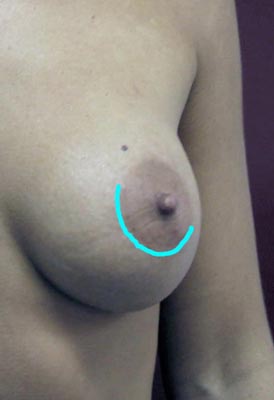 |
| lying on the borderline between two different shades of skin color |
|
Duration of the procedure
The operation lasts no longer that 2 hours
Anesthesia
The operation can be performed both under local and general anesthesia. The surgeon in the operation room will prescribe, in case of local anesthesia, a mild sedation that will allow you to relax right before undergoing surgery. In case of general anesthesia instead, the patient will sleep throughout the whole operation. It will be you together with the anesthesiologist to decide what level of consciousness you wish to maintain during the intervention.
Hospital Stay
According to the procedure employed, the patient may decide to be dismissed on the same day of the operation or remain one day at the clinic. You may organize the kind of stay that most suits you. Should you wish to be discharged the first evening, it will be necessary for you to stay within a reasonable distance, so as to make it easy for the surgeon to reach you in case of an emergency.
